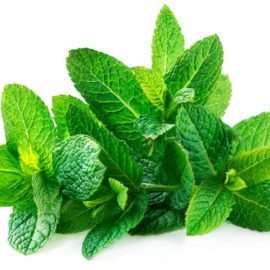The cosmetic and personal care sector is experiencing a period of increasing competition and profound transformations in the way consumers make their purchasing decisions. In such a context, leading brands are opening the door to becoming more disruptive and bold in their proposals. A cosmetic formula that targets scalp types in pets might hold the key to new opportunities where a brand new consumer target awaits: the pet owner.
It comes as no surprise that pet owners are paying increasing attention to their pets’ needs, taking care of their wellbeing, and assuming them as an additional family member.
This has led to cosmetic brands tapping into new opportunities as the pet care sector grows to include a wide variety of products and services and its market value expands: the pet care industry is expected to grow at a CAGR of 5.2%, moving from USD 179 billion to 241 billion, according to Research and Markets.
In fact, the BPC segment is seeing a favourable trend in the ‘skinification’ of pet care, that is, the treating of pets’ skin and fur as yet another scalp type.
This trend doesn’t exist in a vacuum, but participates in a series of other movements taking place today as part of the disruptions faced by the cosmetic sector we mentioned above. As such, while natural, sustainable cosmetics have become market leaders in the global cosmetic industry, the claim is also becoming widely popular in the pet care segment. In fact, 50% of pet owners are willing to pay more for organic, natural or eco-friendly products, according to a survey by Pet Keen.
What shape can a product targeting scalp types in pets take? Or, in other words, what type of formulas would get the attention of owners looking to step up the care they can provide to their pets? Keep reading to find out.
Content
Scalp types in pets: an extension of human scalp care
Just like the hair care segment for humans, pet care products targeting scalp typically crystalize into shampoos, conditioners and dandruff treatments.
However, in a competitive market, alignment with current consumer preferences is crucial. This is why product development targeting scalp health for pets should take into account how the cosmetic sector is seeing health-conscious consumers shift their habits as they become increasingly informed about scalp types and scalp health.
As such, the winning formula will provide specific, tangible and science-based effects that consumers can understand. Additionally, a product targeting scalp health for pets should also look at common scalp issues, which include:
- Scalp types in humans and pets are determined by the amount of sebum production and skin pH balance or imbalances. Just like skin in general, scalp types can be divided into three categories: dry, oily and balanced, which present their own needs, from flaking to dandruff, irritation or eczema. As such, soothing, moisturizing or anti-dandruff treatments are all part of common care claims relating to the diverse needs of the different scalp types.
- Hair aging and hair loss issues and disorders might also be of interest for the pet care segment.
- Protection against the damaging action of free radicals and negative effects of pollution for pets living in urban environments.
The extracts to help brands build a pet care catalog
On the one hand, brands looking to target sensitive skin issues can be inspired by Provital’s Dermasooth™, a soothing solution to minimize irritation and promote moisturizing, that also provides a boost for the skin’s natural barrier function.
On the other hand, the plant-based active ingredient Kerascalp™ can help companies target hair health issues both for humans and pets.
Finally, Pronalen Bio-protect represents a bold move for the development of a scalp care product targeting urban pets. This Provital’s new active ingredient is a hydrosoluble standardized extract of ginseng, apple, peach, wheat and barley that aims to protect skin and hair from the negative effects of pollution. It does so on the following three fronts:
- Chemical/physical block against the heavy metals and PM2.5 particles, preventing their interaction with the biological enzymatic systems present in all scalp types and potential imbalances.
- Protection and stabilization of the cellular membranes in the scalp, avoiding the negative action of the heavy metals and PM2.5 particles that cause damage to cell metabolism.
- Generating an outstanding anti-oxidant action to prevent the activity of free radicals.
Research has shown this ingredient’s in-vivo efficacy in the following areas:
- A protective action, mitigating oxidation of cell membranes
- An increase in cell viability against Pb (4 mM), Cd (0.2 mM), Hg (0.07 mM) and Zn (0.3 mM), effectively protecting fibroblasts from the harmful action of heavy metals and polluting gases
In addition to this, ex-vivo efficacy results confirmed a reduced content of pollutant particles: hair applied with Pronalen Bio-Protect contains a quarter of pollutant particles compared to hair treated only with water and half the pollutant particles than the placebo.All in all, as plant-based active ingredients become key for successful formulas for human scalp health and skincare, pet care options can also tap into science-backed, efficient natural ingredients for targeting new growth opportunities.
No comments yet
There are no comments on this post yet.





Leave a comment